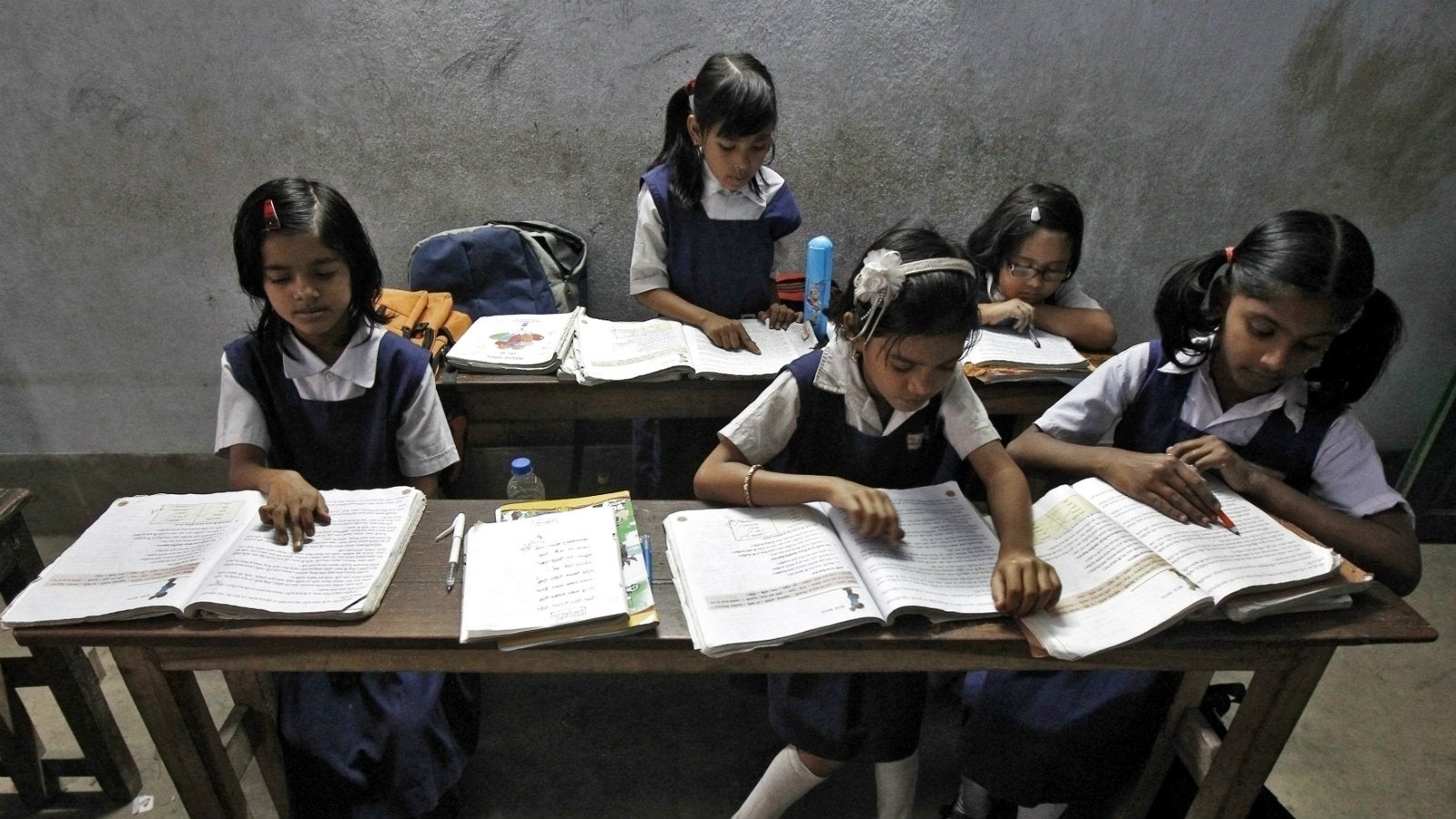To make India “skilled”, Modi needs to first set primary schools right
“If we have to promote the development of our country, then our mission has to be skill development and skilled India,” said prime minister Narendra Modi in his Independence Day speech in 2014.


“If we have to promote the development of our country, then our mission has to be skill development and skilled India,” said prime minister Narendra Modi in his Independence Day speech in 2014.
“Millions and millions of Indian youth should acquire the skills… which could contribute towards making India a modern country.”
The optimism reflected in the prime minister’s words is encouraging, but is it actually doable? After all, India’s education sector is a mammoth apparatus plagued by multiple maladies, from inadequate budget to implementation challenges.
India is one of the youngest nations in the world, with more than half of its population below 25 years of age. By 2020, India’s average age is estimated to be 29 years, compared to 46 years in Europe.
The numbers are stacked in India’s favour even on a longer horizon. In the next 20 years, for instance, the world’s labour force is expected to decline by 4%. But in India, the size of the labour force will expand (pdf) by 32%. This demands an urgent and significant improvement in the skill and knowledge levels of the country’s workforce.
So far, the government has launched four key initiatives:
- The National Skill Development Mission (pdf), developed to create convergence across sectors and states in terms of skill-training activities.
- The National Policy for Skill Development and Entrepreneurship to empower (pdf) the individual through a process of lifelong learning via instruments such as credible certifications, credit accumulation and transfer, etc.
- Pradhan Mantri Kaushal Vikas Yojana, a scheme which will provide financial rewards to candidates who successfully complete approved skill-training programmes.
- Skill Loan Scheme, which makes available loans ranging from Rs5,000-Rs1.5 lakh to 3.4 million youth of India, seeking to attend skill development programmes.
However, the problem is the source of skilled manpower in India.
The need for skilled manpower by 2020 is estimated to be 109.73 million. But data from the National Sample Survey 68th Round (pdf) (published in September 2015) suggests that only 2.4% of persons aged 15 years and above have technical degrees or diplomas or certificates, despite 46.1% of literates having secondary and above levels of education.
Moreover, more than 40% of people aged 5-29 years were not currently attending classes at any educational institution. So where do employers in India go to hire skilled workforce?
The hard truth is that no country’s workforce simply becomes skilled one fine morning. To meet global challenges and maximise opportunities, the focus must be on the children taking their first steps in learning at India’s 1.3 million anganwadis—where 36.5 million of them get their pre-school education—and the 858,916 primary schools across the country.
The transition from elementary to secondary school is also critical if India wants to skill its massive workforce. Of all children enrolled in class 5, about half cannot read at class 2 level and more than 80% cannot read sentences, according to the 2014 ASER report.
Close to half of all the children finishing eight years of schooling still do not have basic arithmetic skills. Children are not actually learning the three Rs—reading, writing and arithmetic—in school. Some 17.8 million Indian children are out of school, according to 2014 UNICEF estimates (pdf).
The Right of Children to Free and Compulsory Education Act (pdf) gives every child the right to full-time elementary education. This legislation, which guarantees completion of schooling, however, is replete with gaps when it comes to implementation. While the Act, through Sarva Siksha Abhiyan, has helped improve access to education, the learning outcomes are far from satisfactory. Poor infrastructure, a shortage of trained teachers, socio-economic biases, and feeble budgetary allocations are also significant challenges.
Funding for education is the key for any transformation. India’s spending on education has remained at less than 3.5% of GDP, while the required minimum is 6% as recommended by the Kothari Commission (1964-66) (pdf). It is time the government invested more in education. Without good school education, a truly skilled India could remain a pipe dream.
We welcome your comments at [email protected].